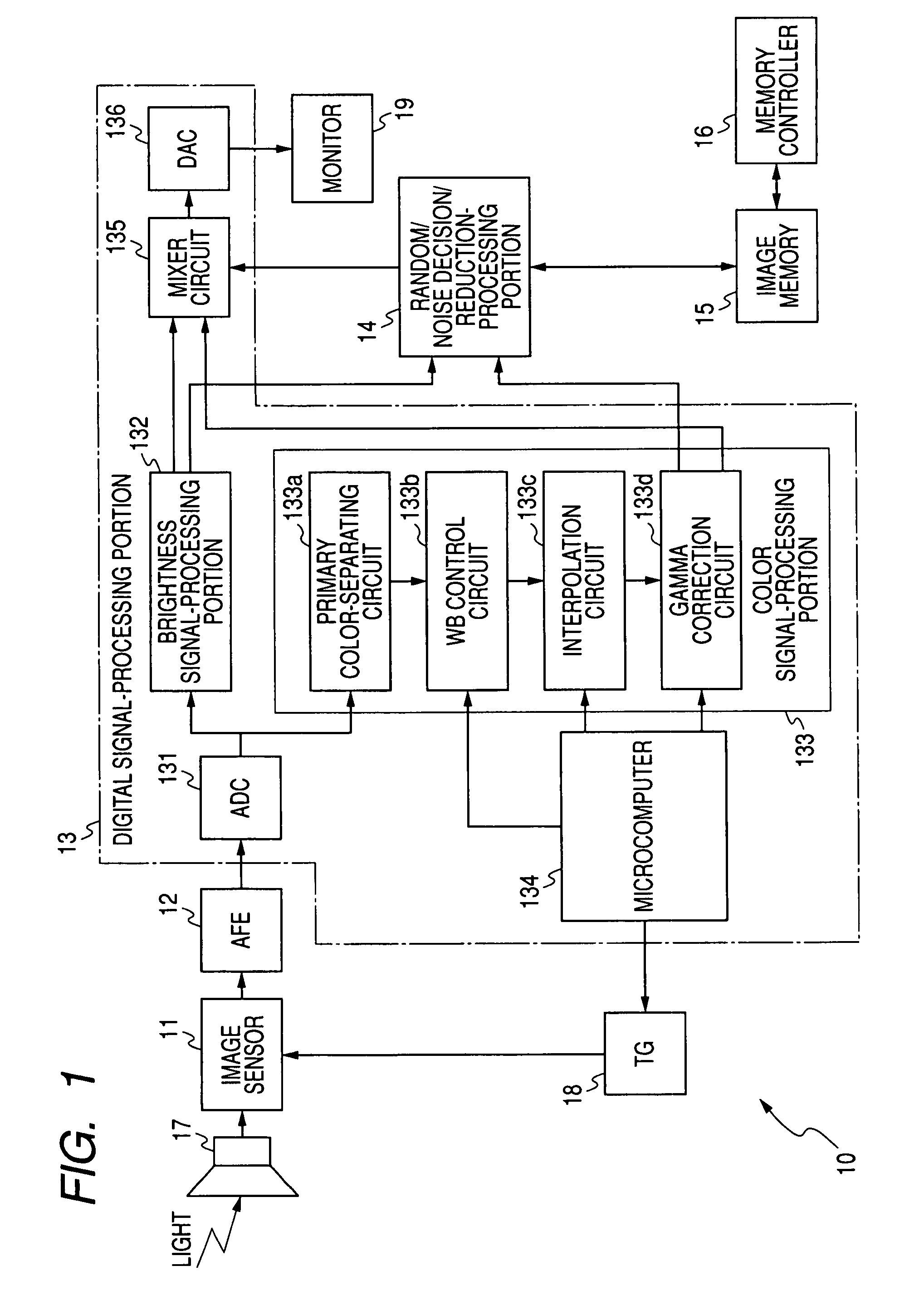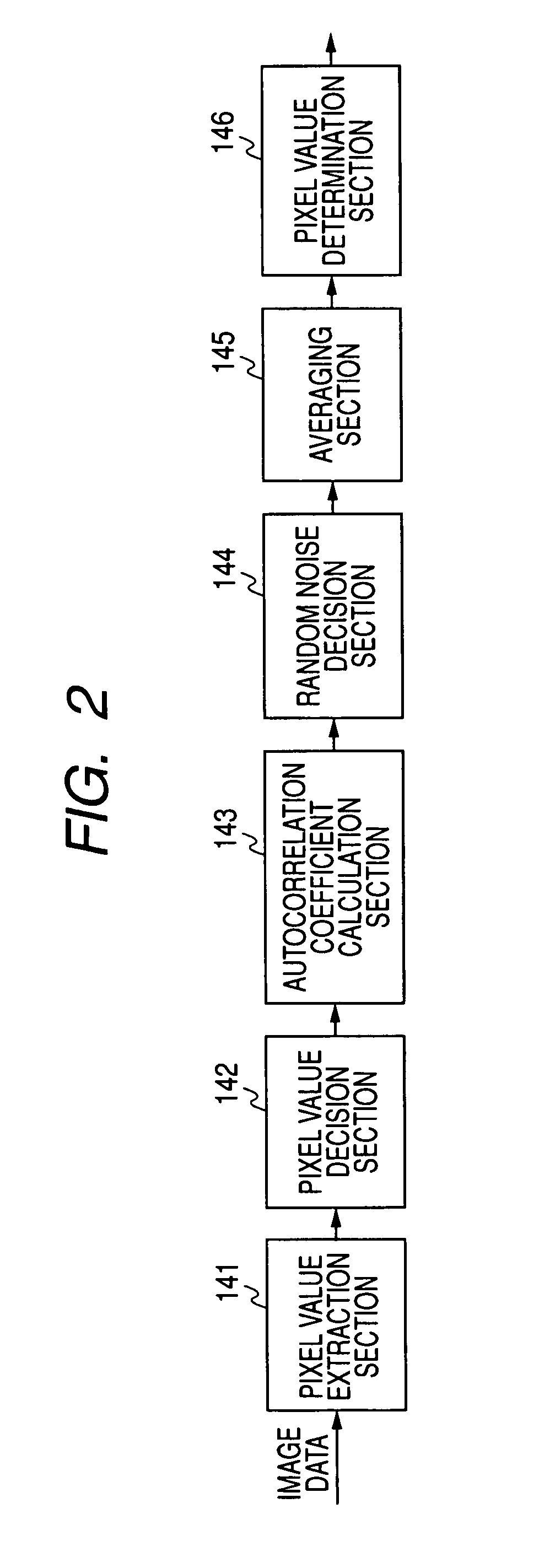Method of processing noise in image data, noise reduction unit, and imaging apparatus
a technology of image data and noise reduction, applied in the field of image data processing and noise reduction, can solve problems such as inability to achieve noise suppression, and achieve the effects of reducing the amount of autocorrelation coefficient computation, reducing the amount of random noise, and high random noise levels
- Summary
- Abstract
- Description
- Claims
- Application Information
AI Technical Summary
Benefits of technology
Problems solved by technology
Method used
Image
Examples
embodiment 1
[0037]A method of processing noise in image data according to an embodiment of the present invention is hereinafter described with reference to the accompanying drawings. Furthermore, a noise reduction unit according to an embodiment of the invention and an imaging apparatus using the noise reduction unit are described.
[0038]FIG. 1 is a block diagram of the whole structure of an imaging apparatus using a noise reduction unit for processing noise in image data in accordance with Embodiment 1 of the present invention. FIG. 2 is a functional block diagram of a random noise decision / reduction processing portion included in the imaging apparatus shown in FIG. 1. FIG. 3 is a flowchart illustrating a procedure of operations performed by the random noise decision / reduction processing portion of the imaging apparatus shown in FIG. 1. FIG. 4 is a graph illustrating the relationship between the number of frames and autocorrelation coefficient used in Embodiment 1 of the invention.
[0039]Referri...
embodiment 2
[0072]Embodiment 2 of a random noise decision / reduction processing portion according to the present invention is next described by referring to FIGS. 6 and 7.
[0073]FIG. 6 is a functional block diagram of the random noise decision / reduction processing portion of Embodiment 2 of the present invention. FIG. 7 is a flowchart illustrating a procedure of operations performed by the random noise decision / reduction processing portion of Embodiment 1 of the invention.
[0074]The random noise decision / reduction processing portion 14 according to the present Embodiment 2 has pixel value extraction section 141, pixel value decision section 142, first autocorrelation coefficient calculation section 143, random noise decision section 144, averaging section 145, and pixel value determination section 146 in the same way as the above-described Embodiment 1. Furthermore, the random noise decision / reduction processing portion 14 according to Embodiment 2 has pixel value setting section 147, second autoc...
PUM
 Login to View More
Login to View More Abstract
Description
Claims
Application Information
 Login to View More
Login to View More - R&D
- Intellectual Property
- Life Sciences
- Materials
- Tech Scout
- Unparalleled Data Quality
- Higher Quality Content
- 60% Fewer Hallucinations
Browse by: Latest US Patents, China's latest patents, Technical Efficacy Thesaurus, Application Domain, Technology Topic, Popular Technical Reports.
© 2025 PatSnap. All rights reserved.Legal|Privacy policy|Modern Slavery Act Transparency Statement|Sitemap|About US| Contact US: help@patsnap.com



